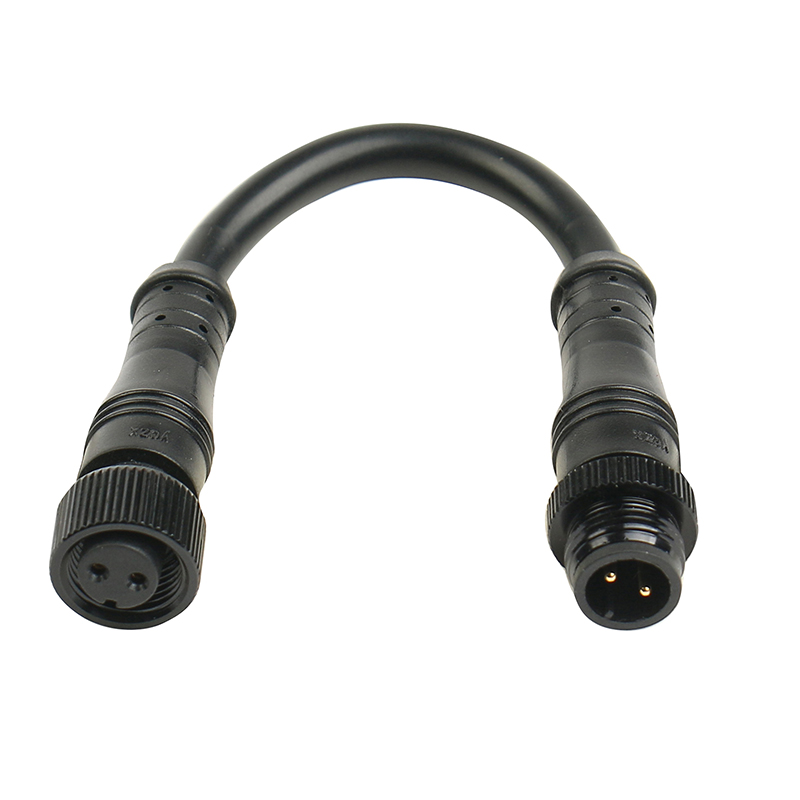News


News

How Waterproof Electrical Connectors Protect Hoverboards from Rain, Mud, and Vibration
Release time:2025-04-27
viewed:257
Hoverboards, designed for both urban commuting and off-road adventures, face relentless exposure to rain, mud, and vibrations. These elements can quickly degrade electrical systems, leading to malfunctions or safety hazards. Waterproof electrical connectors are the unsung heroes that ensure reliable performance in these conditions. This article explores how their core design—featuring IP67/IPX5 ratings, silicone seals, and overmolded cable entries—enables hoverboards to thrive in harsh environments.

Hoverboards encounter three primary threats:
Rain and Water Splash: Water ingress can short-circuit motor controllers or battery management systems (BMS).
Mud and Debris: Particulates clog connectors, accelerating corrosion and increasing contact resistance.
Vibration: Constant shocks from uneven terrain loosen connections, disrupting power and signal integrity.
Data Insight: Non-waterproof connectors in hoverboards fail at a rate of 35% within 6 months in wet climates, while IP67-rated models reduce failures to <5%.
IP67: Protects against dust ingress and temporary submersion (up to 1 meter for 30 minutes). Ideal for hoverboard wheel hubs and battery compartments.
IPX5: Resists low-pressure water jets from any direction. Suitable for connectors near hoverboard decks or handlebars.
Structure:
Primary Seal: Silicone O-rings compress between mating surfaces to block water.
Secondary Seal: Overmolded silicone around pins prevents capillary leakage.
Performance: Silicone retains elasticity from -55°C to +200°C, ensuring seals stay intact during thermal cycling.
Process: Molten thermoplastic is injected around cables, creating a seamless, waterproof bond.
Advantages:
Eliminates gaps where water/mud could enter.
Adds strain relief to prevent cable pull-out during vibration.
CPA (Connector Position Assurance): A secondary lock prevents accidental disconnection.
Threaded Coupling: M8 or M12 threaded connectors (e.g., TE Deutsch DT series) withstand shocks better than snap-in types.
A hoverboard brand faced frequent motor shutdowns in rainy conditions due to corroded connectors in the wheel hub.
Replaced standard connectors with IP67-rated waterproof electrical connectors featuring:
Gold-plated contacts (0.5µm thickness) for oxidation resistance.
Overmolded silicone cable entries.
CPA locks for vibration resistance.
Failure Rate: Dropped from 30% to 2% in 12 months.
Customer Satisfaction: 90% reduction in water-related warranty claims.
Post-Ride Cleaning:
Rinse connectors with fresh water to remove mud and salt.
Dry thoroughly with compressed air.
Annual Inspection:
Check seals for cracks or hardening.
Measure contact resistance (<10mΩ) with a multimeter.
Lubrication:
Apply silicone grease to O-rings annually to maintain flexibility.
IP Rating: Match to the hoverboard’s exposure (e.g., IP67 for wheel hubs).
Current Rating: 2–10A for sensors; 10–30A for motors.
Material:
PBT housings for heat resistance (up to 125°C).
316 stainless steel contacts for saltwater environments.
Waterproof electrical connectors are vital for hoverboards to survive rain, mud, and vibration. By combining IP67/IPX5 sealing, silicone O-rings, and overmolded cables, these connectors prevent failures that could endanger users or damage electronics. For manufacturers and riders alike, investing in high-quality Waterproof electrical connectors ensures safer, longer-lasting hoverboards—ready to tackle any terrain.